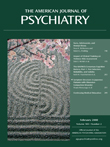Drs. Weintraub and Hurtig Reply
To The Editor: We appreciate Dr. Rasimas’ thoughtful observation that ECT should be considered as a treatment option for the neuropsychiatric complications of Lewy body disease. Specifically, there is evidence of ECT’s effectiveness in the treatment of depression in Parkinson’s disease (1) —often accompanied by temporary improvement in the motor symptoms of Parkinson’s disease—as well as limited case literature (2) suggesting that it may also be effective in treating psychosis in the disease. In addition, anecdotal experience suggests that ECT may improve agitation in the context of dementia in Parkinson’s disease, with psychosis often being a component of this clinical syndrome. We agree that ECT can play a role in this setting, but only when the neuropsychiatric symptoms are medically intractable.
Regarding the use of other pharmacologic treatments for psychosis in Parkinson’s disease and dementia with Lewy bodies, Dr. Rasimas references the positive results of a 1995 open-label study (3) of ondansetron, a 5-HT 3 antagonist, for the treatment of psychosis in advanced Parkinson’s disease. To our knowledge, this study has not been replicated. Furthermore, the high cost of ondansetron is a major drawback compared with more affordable and relatively safe atypical antipsychotics (e.g., quetiapine and clozapine).
Regarding other evidence in support of the role of the serotonergic system in these disorders, there is case literature suggesting that selective serotonin reuptake inhibitors may have antipsychotic properties in both Parkinson’s disease (4 , 5) and dementia with Lewy bodies (6) .
1. Moellentine C, Rummans T, Ahlskog JE, Harmsen WS, Suman VJ, O’Connor MK, Black JL, Pileggi T: Effectiveness of ECT in patients with Parkinsonism. J Neuropsychiatry Clin Neurosci 1998; 10:187–193Google Scholar
2. Hurwitz TA, Calne DB, Waterman K: Treatment of dopaminomimetic psychosis in Parkinson’s disease with electroconvulsive therapy. Can J Neurol Sci 1988; 15:32–34Google Scholar
3. Zoldan J, Friedberg G, Livneh M, Melamed E: Psychosis in advanced Parkinson’s disease: treatment with ondansetron, a 5-HT 3 receptor antagonist. Neurology 1995; 45:1305–1308 Google Scholar
4. Voon V, Lang AE: Antidepressants in the treatment of psychosis with comorbid depression in Parkinson disease. Clin Neuropharmacol 2004; 27:90–92Google Scholar
5. Meco G, Bernardi S: Antidepressant use in treatment of psychosis with comorbid depression in Parkinson’s disease. Prog Neuropsychopharmacol Biol Psychiatry 2007; 31:311–313Google Scholar
6. Tanaka M, Kita T: Paroxetine and improvement of visual hallucinations in patients with dementia with Lewy bodies (letter). J Am Geriatr Soc 2005; 53:732–733Google Scholar



